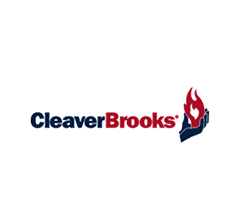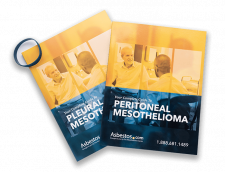Cleaver-Brooks
Cleaver-Brooks was a maker of boilers that once used asbestos-containing parts such as gaskets, insulation and refractory linings. The company continues to face asbestos lawsuits and has paid tens of millions of dollars in asbestos lawsuit claims.

Written by Daniel King • Edited By Walter Pacheco
Asbestos.com is the nation’s most trusted mesothelioma resource
The Mesothelioma Center at Asbestos.com has provided patients and their loved ones the most updated and reliable information on mesothelioma and asbestos exposure since 2006.
Our team of Patient Advocates includes a medical doctor, a registered nurse, health services administrators, veterans, VA-accredited Claims Agents, an oncology patient navigator and hospice care expert. Their combined expertise means we help any mesothelioma patient or loved one through every step of their cancer journey.
More than 30 contributors, including mesothelioma doctors, survivors, health care professionals and other experts, have peer-reviewed our website and written unique research-driven articles to ensure you get the highest-quality medical and health information.
About The Mesothelioma Center at Asbestos.com
- Assisting mesothelioma patients and their loved ones since 2006.
- Helps more than 50% of mesothelioma patients diagnosed annually in the U.S.
- A+ rating from the Better Business Bureau.
- 5-star reviewed mesothelioma and support organization.
Testimonials
My family has only the highest compliment for the assistance and support that we received from The Mesothelioma Center. This is a staff of compassionate and knowledgeable individuals who respect what your family is experiencing and who go the extra mile to make an unfortunate diagnosis less stressful. Information and assistance were provided by The Mesothelioma Center at no cost to our family.LashawnMesothelioma patient’s daughter
How to Cite Asbestos.com’s Article
APA
King, D. (2023, October 2). Cleaver-Brooks. Asbestos.com. Retrieved April 12, 2024, from https://www.asbestos.com/companies/cleaver-brooks/
MLA
King, Daniel. "Cleaver-Brooks." Asbestos.com, 2 Oct 2023, https://www.asbestos.com/companies/cleaver-brooks/.
Chicago
King, Daniel. "Cleaver-Brooks." Asbestos.com. Last modified October 2, 2023. https://www.asbestos.com/companies/cleaver-brooks/.
Cleaver-Brooks’ History with Asbestos
In 1929, engineer John C. Cleaver manufactured the world’s first packaged boiler in Oregon, Illinois. Two years later, Cleaver partnered with notable businessman Raymond Brooks to form Cleaver-Brooks. Together they began to mass-produce packaged boilers.
The company’s first packaged boiler was a portable steam boiler that could heat asphalt, making the material hot enough to pump into a truck to pave roads. Cleaver-Brooks initially produced boilers for road expansion and comfort-heating applications.
Cleaver-Brooks’ boilers and boiler parts were made with asbestos materials to resist heat and prevent fires. Some of the asbestos-containing parts included gaskets, insulation and refractory linings.
In 1992, Cleaver-Brooks bought Industrial Boiler Co., located in Thomasville, Georgia, to further expand the company’s product line in the South. The company’s headquarters remain in Thomasville.
Today, the company manufactures boiler-room equipment across commercial, institutional and industrial markets. Unlike other asbestos manufacturers, Cleaver-Brooks has not filed for bankruptcy and continues to face asbestos lawsuits in court.

Asbestos Litigation Involving Cleaver-Brooks
More than 200,000 asbestos-related lawsuits have been filed against Cleaver-Brooks since 1985. It has paid tens of millions of dollars in asbestos claims over the past 30 years.
Unlike many companies that produced asbestos products, Cleaver-Brooks did not go bankrupt and has not created a trust for asbestos claims. Rather, the company has decided to continue to defend itself in court against current and future claims.
- On July 24, 2013, a jury in New York awarded $190 million to five mesothelioma plaintiffs who were exposed to asbestos on the job while working with asbestos-containing products manufactured by Cleaver-Brooks and others. Cleaver-Brooks was held liable for $30.54 million. The $190 million verdict is the largest of its kind in the history of New York.
- In April 2014, a New York appeals court upheld a $980,000 verdict for a mesothelioma plaintiff who claimed his cancer was caused by exposure to Cleaver-Brooks’ asbestos-containing boilers at McConnell Air Force Base.
- Donald Robertson sued Cleaver-Brooks and others in 2017, claiming he developed mesothelioma from installing, repairing and maintaining boilers built by Cleaver-Brooks. The circuit court initially dismissed the claim. However, the Wisconsin Supreme Court reversed that decision in February 2018 and brought the case back to the courts.
- In 2019, a mesothelioma lawsuit filed against Cleaver-Brooks in Colorado survived a motion to be dismissed because the plaintiff had enough evidence to proceed with the lawsuit.
- Cleaver-Brooks settled a number of lawsuits once trials had begun. For example, it settled mid-trial in 2014 and avoided paying a share of a $20 million verdict. In 2015, it settled one day into a trial with a mesothelioma plaintiff who was a veteran exposed to Cleaver-Brooks boilers in the Navy.
Because asbestos-related diseases can take from 20 to 50 years after exposure to develop, Cleaver-Brooks will likely continue to face claims over injuries such as mesothelioma cancer.
Cleaver-Brooks’ Asbestos Products
Asbestos-containing products sold by Cleaver-Brooks include:
- Boiler insulation
- Cements
- Gaskets
- Pipe covering
- Refractory lining materials
- Millboard
Some of these asbestos products contained up to 95% asbestos fiber by weight.
Cleaver-Brooks Occupations at Risk
Many workers were exposed repeatedly over the years, including boiler tenders, steamfitters, plumbers and maintenance men.
A 2022 report by the European Commission noted that in 2019 alone, over 70,000 workers died from past exposure to asbestos.
The following occupations faced risk of exposure to Cleaver-Brooks’ asbestos products:
- Veterans of the U.S. armed forces
- Boiler workers
- Insulators
- Pipefitters
- Plumbers
- Factory workers
- Industrial workers
- Construction workers
Asbestos is no longer used as widely in boilers, thanks to governmental regulations. The Clean Air Act banned asbestos pipe insulation and asbestos block insulation, which are used to construct boilers and hot water tanks.
The Clean Air Act greatly reduced the manufacturing of asbestos-containing boilers. However, asbestos gaskets and millboards, which are used in boiler manufacturing, have not yet been banned and may still contain asbestos.







